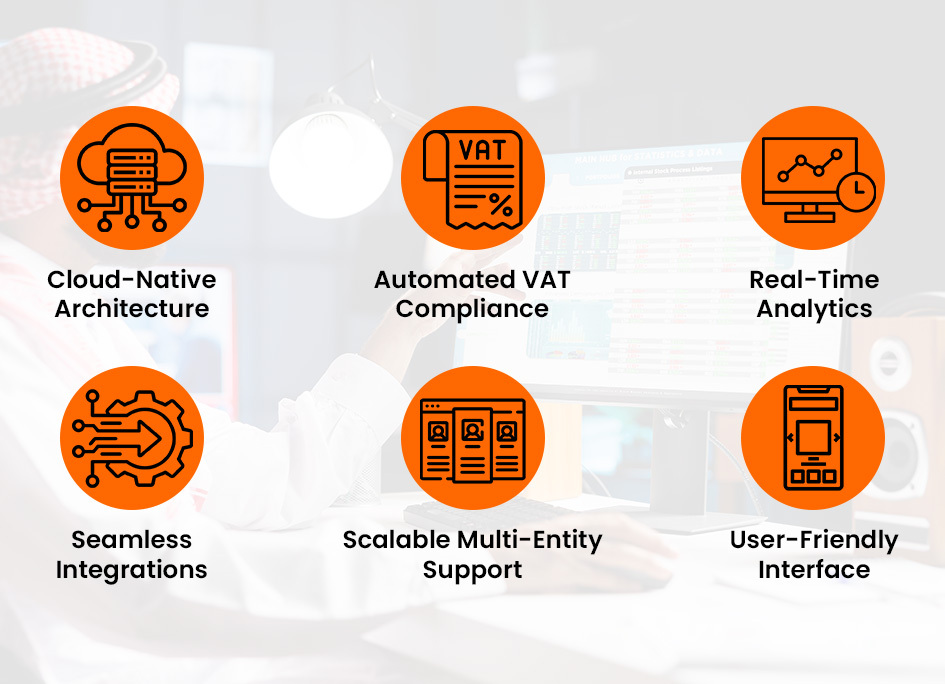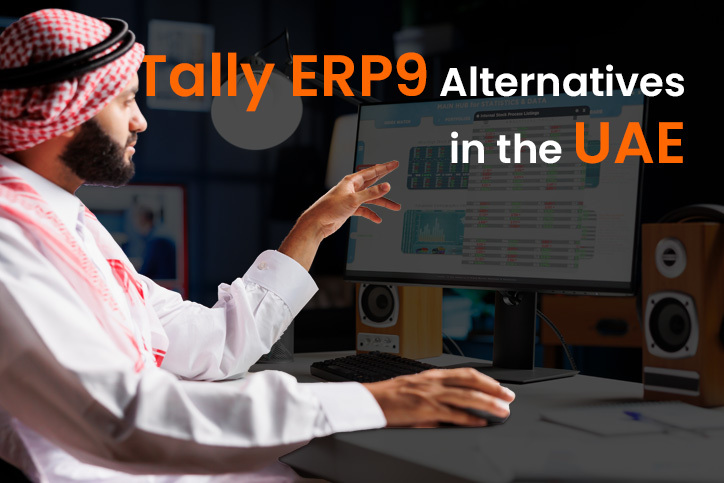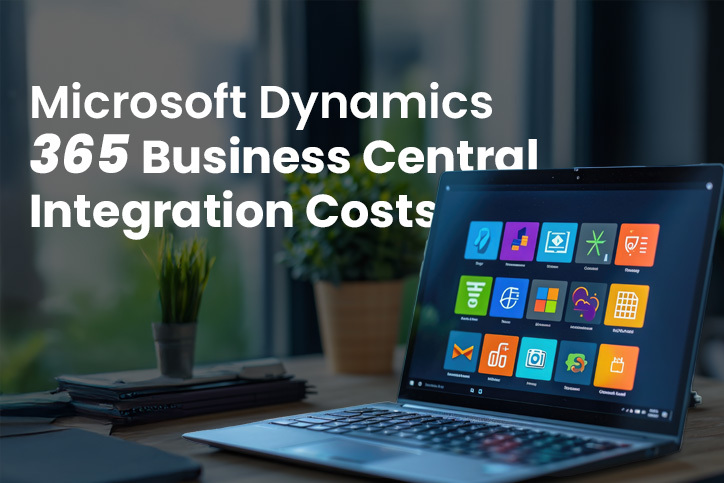Still using Tally ERP9 may be holding your business back. Discover what you’re missing.
Tally ERP9 has long been a trusted workhorse for small and medium businesses in the UAE and beyond. But as businesses in the UAE grow more complex, with evolving VAT regulations, distributed teams, and the need for real-time insights, traditional desktop-based systems like Tally ERP9 struggle to keep up.
Selecting a Tally ERP9 alternative isn’t just about replacing software. It’s about finding a smarter, scalable platform that can support your business now and into the future.
In this guide, we’ll help you evaluate what to look for in a modern ERP: cloud-native access, automated UAE VAT compliance, scalable modules, and intelligent reporting. We also explore why Oracle Cloud ERP is a leading choice, offering built-in automation, strong data security, seamless integrations, and real-time analytics to support smarter decisions.
Whether you’re running a growing SME or a multi-location enterprise, this blog will help you choose an ERP that not only replaces Tally in UAE, but unlocks new levels of growth, visibility, and efficiency.
What Should You Look for in a Tally ERP9 Alternative in the UAE?
Selecting a new ERP is a strategic decision that impacts every aspect of your business. The right alternative must not just replace Tally but transform your operations.
Key Features to Prioritize:
- Cloud-Native Architecture: Enables anytime, anywhere access with robust data security.
- Modular & Scalable Design: Supports growing and changing business needs without system overhaul.
- Built-in VAT & Regional Compliance: Supports UAE VAT and multi-jurisdictional tax rules automatically.
- Real-Time Reporting & Business Intelligence: Interactive dashboards and analytics for faster, smarter decisions.
- Comprehensive Integration: Easily connects with existing CRM, HR, supply chain, and other enterprise systems.
- Mobile Accessibility: Empowers on-the-go access and approval workflows.
- User-Friendly Interface: Simplifies adoption and reduces training overhead.
Choosing an oracle cloud ERP consulting firm with these capabilities means you’re not just switching software—you’re building a platform for sustainable growth.

Oracle Cloud ERP: The Leading Alternative in the UAE Market
Among modern ERP solutions, Oracle Cloud ERP stands out as a future-proof choice tailored for enterprises that require agility and scale.
Why Oracle Cloud ERP?
- AI & Automation: Smart workflows reduce manual effort and errors.
- Regulatory Compliance: Automated VAT configuration and updates keep you audit-ready.
- Security & Access Control: Role-based permissions safeguard sensitive data.
- Multi-Module Platform: Finance, procurement, project management, inventory, HR—all integrated.
- Real-Time Analytics: Get instant insights to drive business performance.
- Cloud Flexibility: Supports multi-location operations seamlessly, ideal for UAE’s growing companies.
Oracle Cloud ERP not only replaces Tally ERP9’s core functionalities but elevates your entire business ecosystem.
Comparing Tally ERP9 and Oracle Cloud ERP: A Side-by-Side Look
| Feature | Tally ERP9 | Oracle Cloud ERP9 |
|---|---|---|
| Cloud Access | No | Yes – 24/7 access from any device |
| Integration | Limited, mostly manual | Seamless with APIs and connectors |
| VAT Compliance | Manual Processing | Automated UAE VAT & global tax supports |
| Reporting | Basic financial reports | Real-time dashboard with drill-downs |
| Scalability | Best for SMEs | Built for global enterprises & growth |
| User Experience | Traditional desktop interface | Modern, intuitive cloud UI |
This isn’t a marginal upgrade—it’s a transformation that redefines how you run your business.
How to Ensure a Smooth Transition From Tally ERP9?
Switching ERP systems may feel daunting, but careful planning ensures your business keeps running smoothly.
- Assess Your Current Pain Points – Conduct a detailed review of your current system’s limitations and identify key improvement areas.
- Prepare Your Data for Migration – Clean and standardize your Tally data to avoid transferring errors or duplicates.
- Partner With Experts – An experienced oracle cloud ERP consulting firm like SoftArt understands UAE business nuances, Oracle Cloud ERP, and compliance requirements to guide you through the migration.
- Engage Your Teams Early – Involve end users from the start and provide hands-on training to boost adoption and reduce resistance.
- Implement Phased Rollouts – Adopt a phased approach to minimize disruption—start with core modules and gradually expand.
- Continuously Monitor & Optimize – Post-launch support and iterative improvements ensure your ERP evolves with your business.
Why Are Businesses Outgrowing Tally ERP9 in the UAE?
Tally ERP9 was built with simplicity in mind, perfectly suited for early-stage or smaller enterprises focused on accounting basics. However, the business landscape has shifted:
- The UAE’s business environment is dynamic with multinational companies, cross-border trade, and complex VAT regulations.
- Digital transformation is no longer optional but a necessity for staying competitive.
- Real-time data and remote accessibility are critical for fast decision-making and collaboration.
- Multiple systems oracle cloud ERP integration is essential to streamline operations across departments.
Many companies find that Tally ERP9’s desktop-bound architecture and limited features are no longer enough to meet these demands.
Common Challenges with Tally ERP9:
- No Cloud Accessibility: Tally’s desktop-only model restricts remote working and real-time collaboration—major hurdles for businesses with distributed teams.
- Limited Integration: It lacks the ability to seamlessly connect with CRM, HRMS, procurement, or analytics tools, creating operational silos.
- Basic Reporting: Tally reports lack the sophistication needed for predictive insights or detailed operational analysis.
- Compliance Shortcomings: While UAE VAT can be managed, the process requires manual workarounds, and multi-country taxation isn’t supported natively.
- Scalability Constraints: Expanding companies struggle to manage multi-entity, multi-location operations efficiently.
- User Experience: As user expectations rise, Tally’s interface and features may feel outdated compared to modern ERP platforms.
If you’ve found yourself adapting workarounds or “making it work” despite these limitations, you’re part of a growing trend. The good news: viable alternatives exist that bring new capabilities without losing core accounting functions.
Industries Benefiting the Most from Tally ERP9 Alternatives
Any UAE enterprise seeking to scale or streamline operations can benefit. Key sectors include:
- Retail & Wholesale: Real-time stock visibility, multi-store coordination, faster order fulfillment
- Construction & Real Estate: Project cost control, vendor management, asset lifecycle tracking
- Healthcare: Patient billing automation, secure data access, compliance with healthcare standards
- Manufacturing: Bill of materials management, supplier coordination, inventory forecasting
- Professional Services: Resource planning, time tracking, billing accuracy
Each industry gains unique value through ERP modernization that breaks down silos and automates routine tasks.
Why SoftArt Is the Trusted ERP Partner in the UAE?
SoftArt has empowered a broad spectrum of UAE enterprises to successfully transition from legacy systems like Tally ERP9 to modern Oracle Cloud ERP solutions.
- Deep domain expertise in Oracle ERP Cloud implementation
- Proven track record of seamless migrations and integrations
- Tailored solutions addressing UAE-specific VAT and regulatory compliance
- Ongoing support for training, optimization, and future scaling
SoftArt’s consultative approach ensures your new ERP solution not only fits your current needs but also lays a foundation for long-term growth and innovation.
Built for the UAE, Ready for Global Growth: Why Oracle Cloud ERP Wins Over Tally ERP9!
Oracle Cloud ERP is tailor-made for the UAE’s dynamic business landscape, with built-in support for local tax regulations—including VAT—and seamless multi-currency operations. Its cloud-native, scalable architecture not only meets the demands of the local market but also empowers businesses to expand confidently, whether regionally or globally, without the fear of technology bottlenecks holding them back.
Holding on to Tally ERP9, however, means more than just sticking with legacy software—it’s limiting your business’s potential for agility, insight, and innovation. In today’s fast-paced environment, modern ERP systems like Oracle Cloud ERP unlock new levels of efficiency, enable real-time data-driven decisions, and provide seamless oracle erp cloud integration across all your business functions.
Remember, your ERP system is the engine that drives your business forward. Don’t let outdated technology stall your progress or restrict your ambitions.
Explore the powerful Tally ERP9 alternatives available in the UAE, partner with trusted experts like SoftArt, and unlock the next chapter of growth and transformation for your business.
Frequently Asked Questions:
Q. Why should I switch from Tally ERP9 to a modern ERP like Oracle Cloud ERP?
Ans. Tally ERP9 is ideal for basic accounting but lacks scalability, cloud access, and advanced features needed for growing UAE businesses. Modern ERPs offer real-time insights, compliance automation, and seamless integrations.
Q. How does Oracle Cloud ERP handle UAE VAT compliance?
Ans. Oracle Cloud ERP has built-in UAE VAT compliance and automates tax calculations and reporting, ensuring accuracy and reducing manual errors.
Q. Can Oracle Cloud ERP support multi-location or multi-entity businesses?
Ans. Yes, Oracle Cloud ERP is designed for scalability and supports multi-location, multi-entity, and even global operations seamlessly.
Q. What are the benefits of cloud-based ERP compared to desktop-based systems like Tally ERP9?
Ans. Cloud ERP provides anytime-anywhere access, real-time collaboration, automatic updates, enhanced security, and easier integrations, unlike desktop-based Tally ERP9.
Q. How can I ensure a smooth transition from Tally ERP9 to a new ERP system?
Ans. A successful transition involves assessing current pain points, cleansing data, partnering with experienced consultants, involving users early, phased rollouts, and ongoing optimization.







